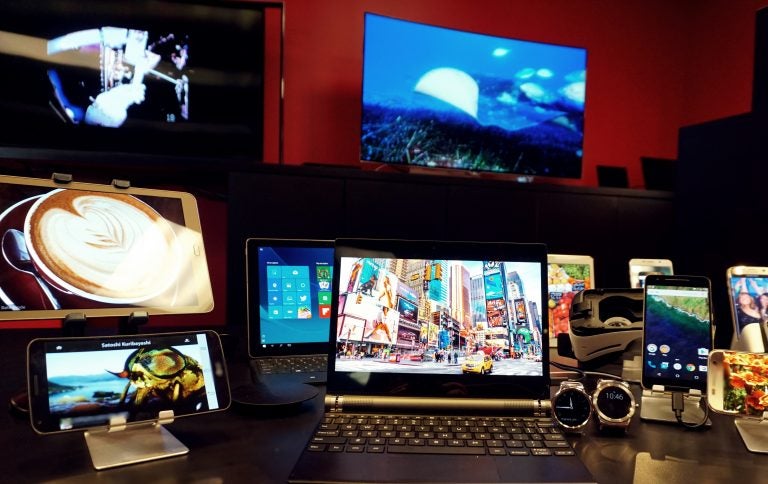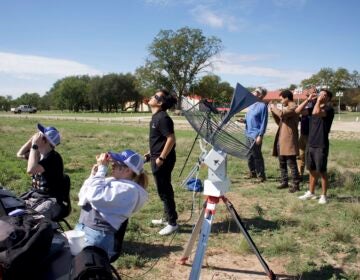How Princeton research from the ’90s made it to the new iPhone
It’s part of an an increasing trend of universities partnering with companies to turn research into new patents and products.

This picture shows the different kinds of devices that use OLED displays (Universal Display Corporation)
Apple advertises its new iPhone X as having an OLED display screen.
That technology came out of research from Princeton University in the 1990s, and it’s part of an increasing trend of universities partnering with companies to turn research into new patents and products.
Back in the early 90s, Sherwin Seligsohn, who would go on to found a company called Universal Display Corporation, went to Princeton University to meet with some professors there.
Steven Abramson, the current president and CEO of the company, explains that “one of the technologies that they showed him was this dim green dot that lasted about 10 seconds, made by a technology called OLED or organic light emitting diode.”
Seligsohn saw something in the green dot, and he decided to pay for some of that research. It ultimately became a very thin display with crisp colors.
The professors and the universities where they worked, including Princeton, hold the patent to the technology. Universal Display Corporation licensed it, and now the display is used in smartphones and TVs, including the new iPhone X. Over the past 10 years, Princeton has earned between $48 million and $143 million a year from licensing technology.
Such collaborations brought us many products we use everyday, says Stephen Susalka, CEO of the Association of University Technology Managers. That’s a professional group of university staff who work specifically on such partnerships.
Successful examples “range from vitamin D milk, to Gatorade, to the use of blue LEDs to FluMist if you’ve ever taken that, or Allegra for allergies … you ate a Honeycrisp apple, all of those are examples of university inventions,” Susalka said.
He adds that companies and universities form such partnerships because getting a big breakthrough requires paying for a lot of fundamental science, and it’s hard to guarantee all that work leads to a new product. The iconic Bell Labs in New Jersey, which generated six Nobel Prizes in the past stopped doing basic research in 2008.
It’s much easier and cheaper for a company to partner with a university full of scientists working on the next big thing, then work out an agreement to reap the benefits once something can be used in a new product.
More universities and companies are taking this to the next level by forming long term relationships rather than specific agreements on a single project, says Kenneth Lutchen, a dean of engineering at Boston University who recently wrote about this for the Harvard Business Review.
Lutchen says a long-term relationship can avoid long and difficult negotiations that sometimes led to partnerships falling apart, or even lawsuits, which Boston University has been involved in. He says companies and universities will be less inclined to sue each other under a long-term partnership, because any aggression will just cut off a source of future innovation.
WHYY is your source for fact-based, in-depth journalism and information. As a nonprofit organization, we rely on financial support from readers like you. Please give today.





